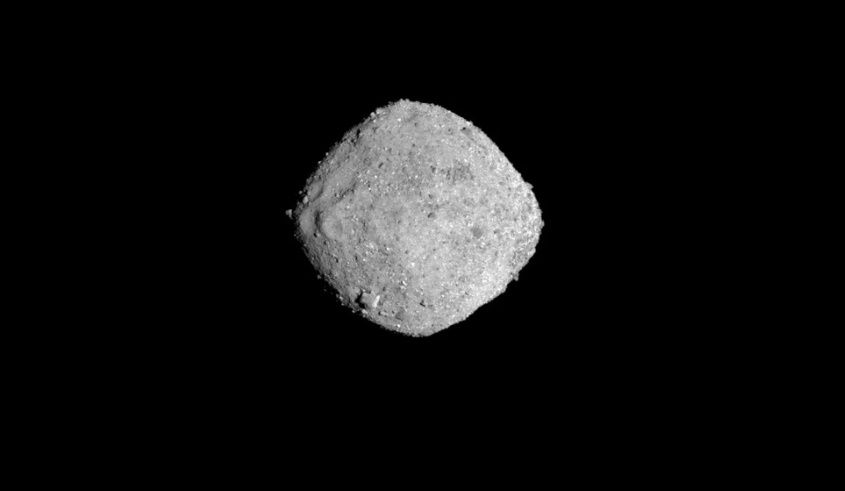The OSIRIS-REx probe has reached the asteroid Bennu
OSIRIS-REX probe (Origins, Spectral Interpretation, Resource Identification, Security-Regolith Explorer) is now less than 20 kilometers awayoin from Bennu. Currently does not orbit woko³³ of the asteroid, but flies along with it. The maneuver to enter orbit will not take place until December 31.
OSIRIS-REx has five instruments on boardoin science. It will study an asteroid for nearly a year. It will accurately determine the shape and mass of the rock and select a convenient place to retrieve the probek. Together with probkami is scheduled to report to Earth in September 2023.
– It is very important that we spend some time collecting this data and making sure that the assumptions that theore we will introduce to the probe during its entry into Bennu orbit, are correct. We need to reduce the risk to a minimum – said Heather Enos of the University of Arizona, deputy chief scientist of the OSIRIS-REx missionown scientist of the OSIRIS-REx mission.
This will be a landmark moment. No spacecraft has yet orbited wokoł such a small object. Bennu asteroid has about 500 metersoin diameter and a mass of about 85 millionow ton. NASA researchers want to enter orbit less than two kilometers from the surface of an asteroid.
– We intend to set a record for the closest distance a spacecraft circles a small object, Enos said. – It won’t be easy, so we need to do it methodically – added.
#WelcomeToBennu! After two years of travel – and more than a decade of planning and work by my team – I’m here. But Arrival is just the beginning… https://t.co/0bQPUwqUCp
The OSIRIS-REx probe was launched from Earth on September 8, 2016. It is currently located with the asteroid about 122 million kilometers awayoin from Earth. But the spacecraft has covered a much greater distance. Made up the distance using gravity assist to get the right speed and catch up with Bennu.
NASA wants to retrieve at least 60 gramsoin probek, but researchers are prepared for more than 2 kilograms of. The maneuver to retrieve the probek will look like „high-five”. The probe will approach Bennu at the most convenient location and touch the rock with its boom. From a special nozzle at the end of the arm will release nitrogen at high pressure, whichory will spray the dust found on the asteroid, after which the ground particles will be sucked aboard the probe.
The maneuver to retrieve probek is scheduled to take place in July 2020. If everything poith the plan, OSIRIS-REx will leave the asteroid Bennu in March 2021, and probka will reach Earth in a special capsule in September 2023.
The carbon-rich asteroid may contain organic materials thatore can answer the most fundamental questions, especially since the object is more than 4 billion years old, meaning it dates back in timeow, when our solar system was just forming.
The asteroid Bennu was discovered in 1999. It is included in the so-called. Apollo groups – is a group of objectow orbiting in orbits that intersect the Earth’s orbit. Currently, we know 8316 asteroids belonging to this group. According to calculations, Bennu will approach our planet eight times between 2169 and 2199.
The media has already seen the suddenowki heralding Armageddon and proclaiming that Bennu will hit Earth, but the probability of a collision is low. Although a collision with such a large object would threaten life on Earth. The asteroid takes its name from a sacred bird from Egyptian mythology.
The probe is also tasked with looking at the object in terms of the so-called “asteroid”. Jarkov effect. Polish researcher, Jan Jarkowski in 1888 suggested that the absorption and radiation of heat can change the trajectory of the object. In the case of Bennu, this is of great importance because of future close flybys near Earth. The trajectory of the asteroid deviated by about. 160 km since it was discovered.
The data collected by OSIRIS-REx should roalso shed light on the potential of the resourceoIn plnatoid similar to Bennu. This could be interesting for future space gornikow. Such resources as though lod water, will be of great importance in the expansion of humanity around the Solar System. Although it currently sounds like science fiction.
